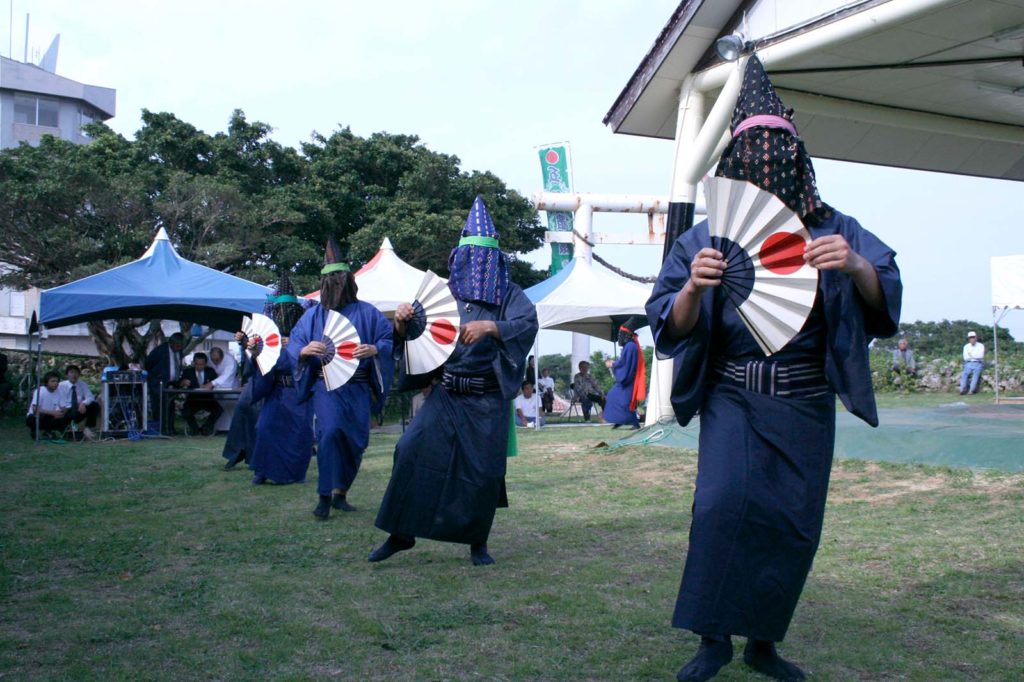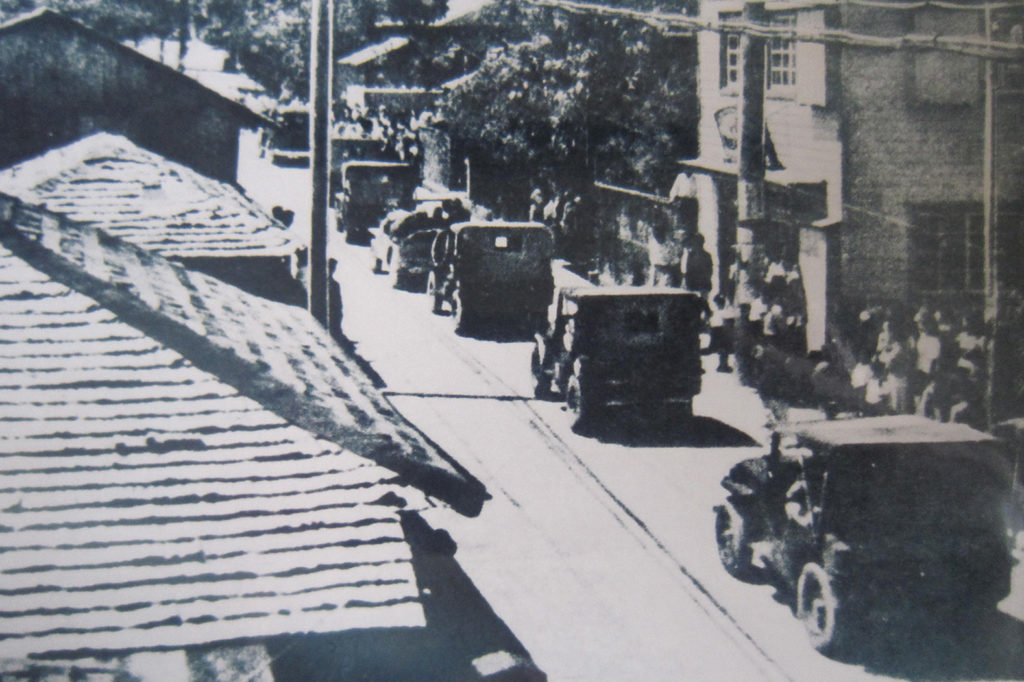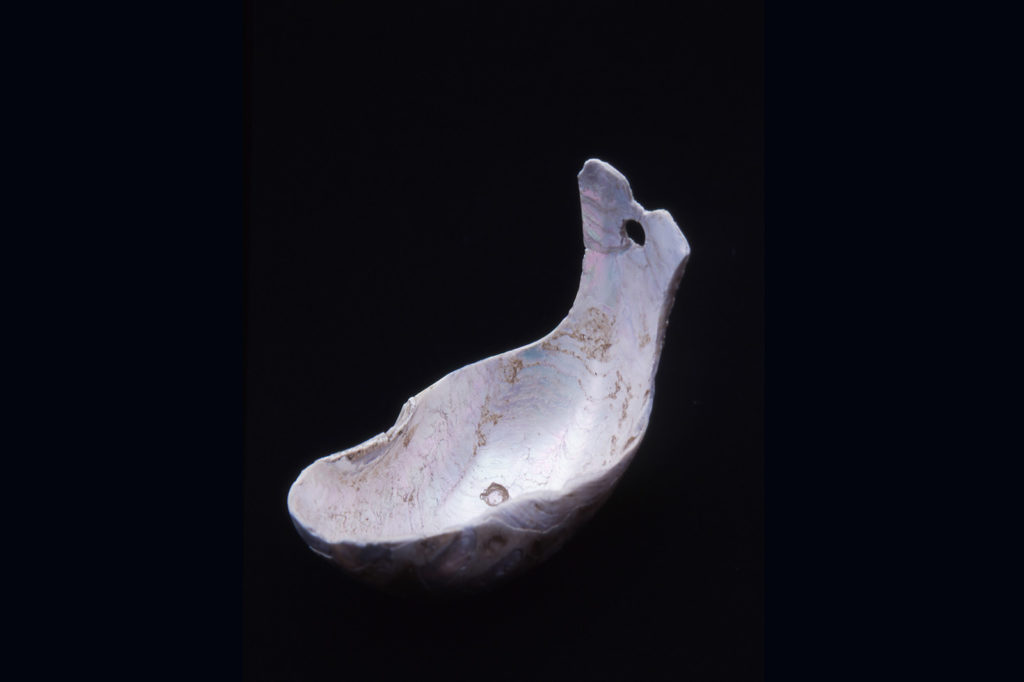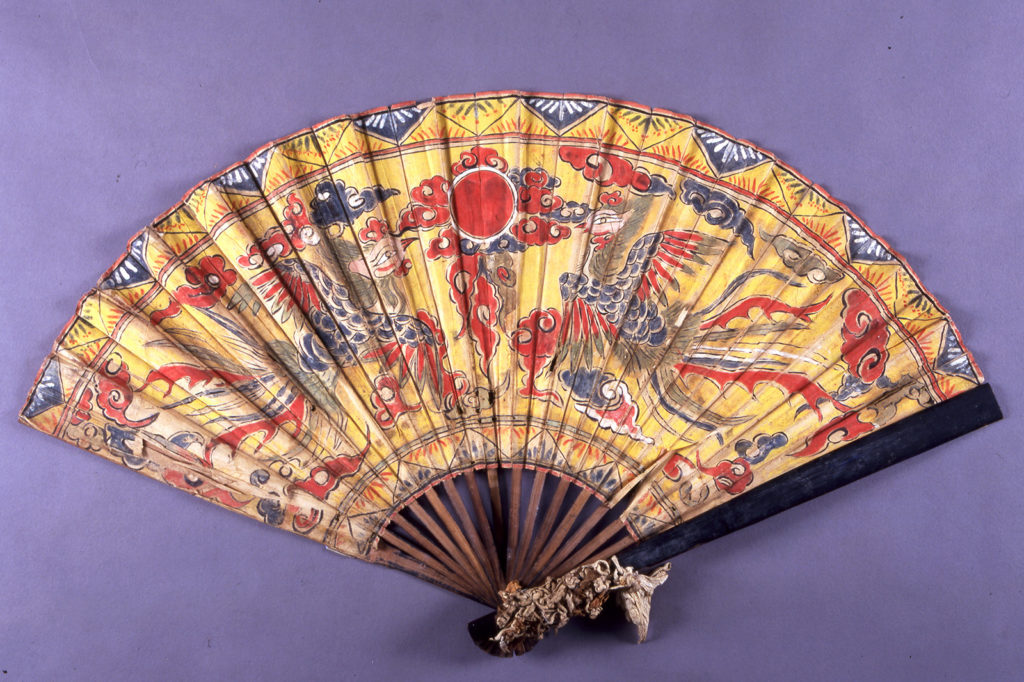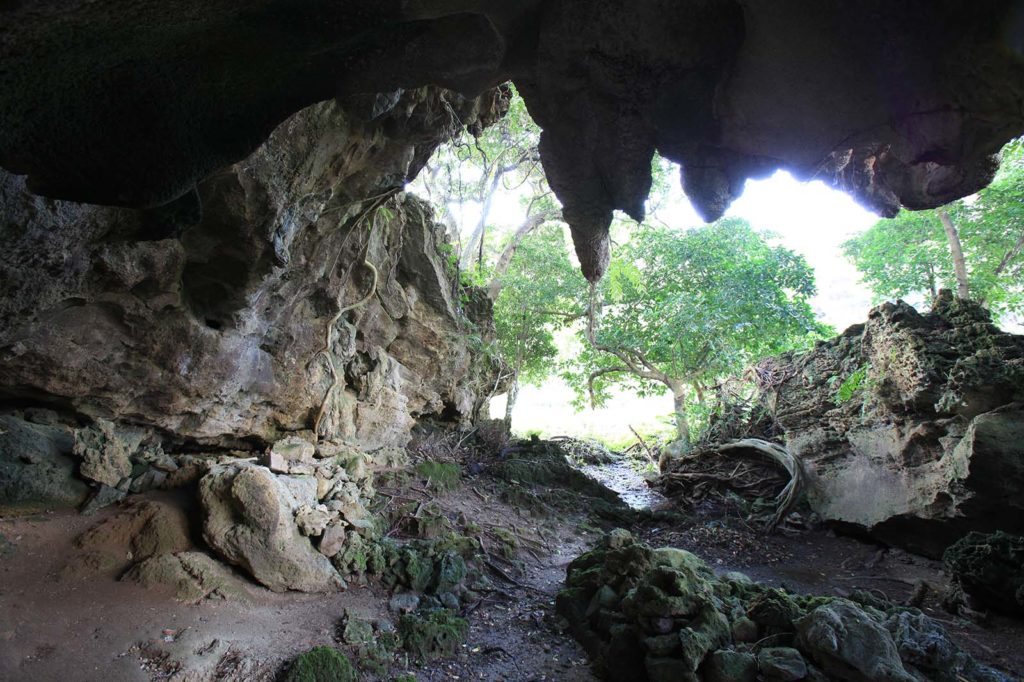
Culture and History
Historical Overview of the Amami Archipelago (Meiji – War in the Showa Era)
The Amami Islands that stretch like stepping stones across the East China Sea are also called the “island road.” They were a sea route for Japanese envoys to the Tang Dynasty. The ria coastline of the Oshima Strait in Setouchi Town forms a natural port that was viewed as a military base as early as the Meiji era, and eventually served the role of rendezvous point for the former Japanese navy combined fleet. The fleet was to conduct a large-scale maneuver in 1908 (Meiji 41) for which commander Heihachiro Togou inspected the Oshima Strait as a potential military base. Commander Togou is said to have recommended the former Japanese navy construct a fortress there.
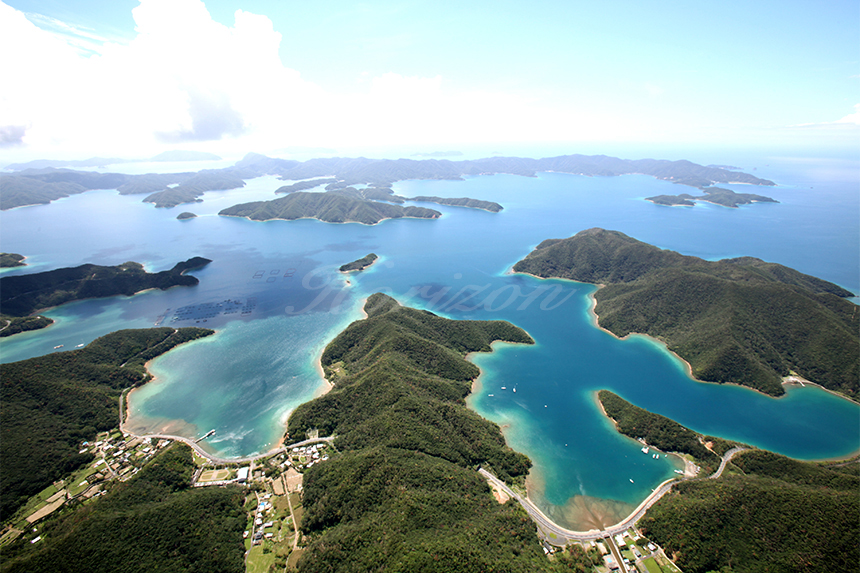
The Oshima Strait served as a military fortress (Setouchi Town, Amami Oshima)
During the Taisho era of 1912 – 1926, the entire Oshima Strait did serve as a military fortress. It also became the southernmost water and air base of the mainland and the location of the Shin’yō special attack submarines during World War II. Many traces of the war can be found even today in the remains of lookout towers, ammunitions stores and barracks.
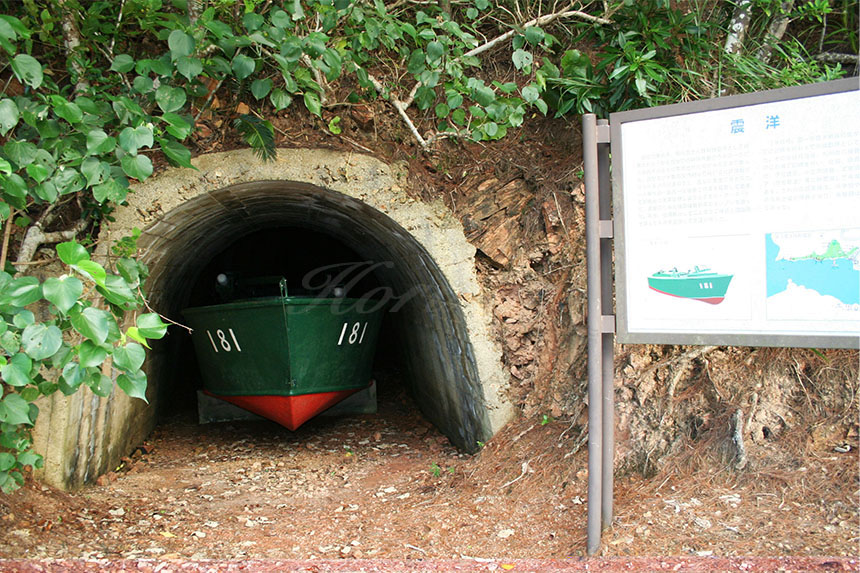
Reconstructed Shin'yō -class suicide motorboat (Setouchi Town, Amami Oshima)
At the end of the Pacific war, battles raged on land in Okinawa, and homeland defense bases in Kagoshima Prefecture were made into kamikaze launch sites of the former Japanese navy.
In Kikaijima, an emergency landing airport was built in 1931 (Showa 6) and an airbase completed later in 1944 (Showa 19). They served as a forward base for kamikaze planes to fuel and do aircraft maintenance on the way to Okinawa from the Kanoya base in Kagoshima. Once bombing prevented use of the former army airport located in Tokunoshima, kamikaze and fighters from both military branches took off and landed here, repeatedly subjecting the area around Kikaijima airport to intense air raids by the US military. Battle command posts and trenches for protection against bullets still remain today.

Combat information center site (Kikai Town, Kikaijima)
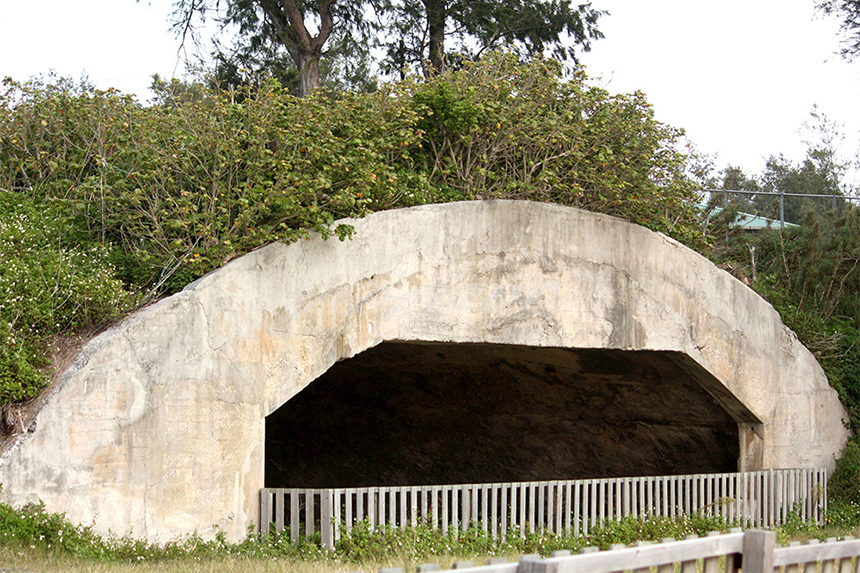
Bunker (Kikai Town, Kikaijima)
In Tokunoshima, the former Japanese army completed and opened Asama Airport in 1944 (Showa 19). Airplanes and kamikaze from the mainland also took off and landed here, so the runway underwent intense bombing from the air and was ultimately used only for emergencies by mid-April 1945 (Showa 20). Part of the runway now makes up the Heiwa-dori, or Peace Road. Offshore in the waters around the islands lies the Toyamamaru and other military and evacuation ships that fell victim to torpedo attacks.
On Okinoerabu Island, which is not far from Okinawa, people tell of having always been cautious of the American vessels and patrol aircraft nearby. Yoron Island was only 30 km away from Cape Hedosaki, the northernmost point of Okinawa, and people on the island reported being able to see kamikaze aircraft shot down by U.S. military planes and Japanese soldiers escape.
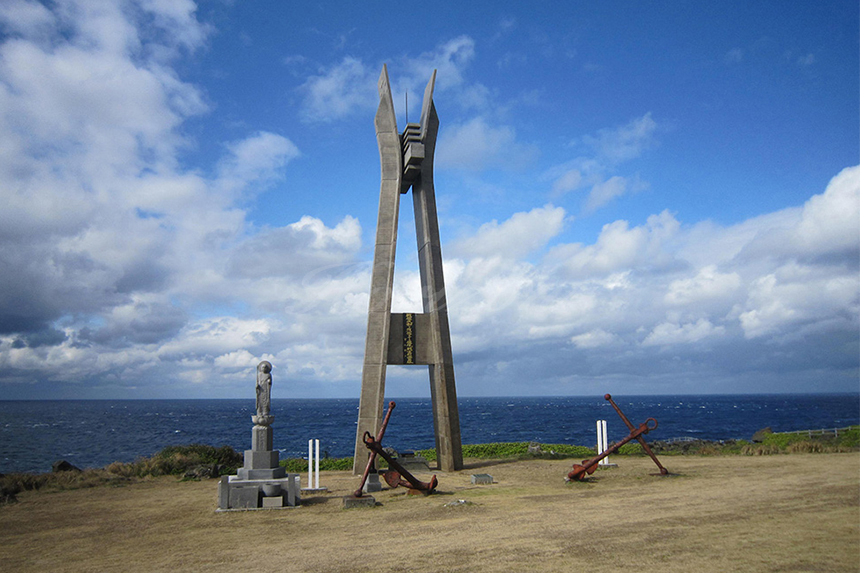
Cenotaph to battleship Yamato (Isen Town, Tokunoshima)
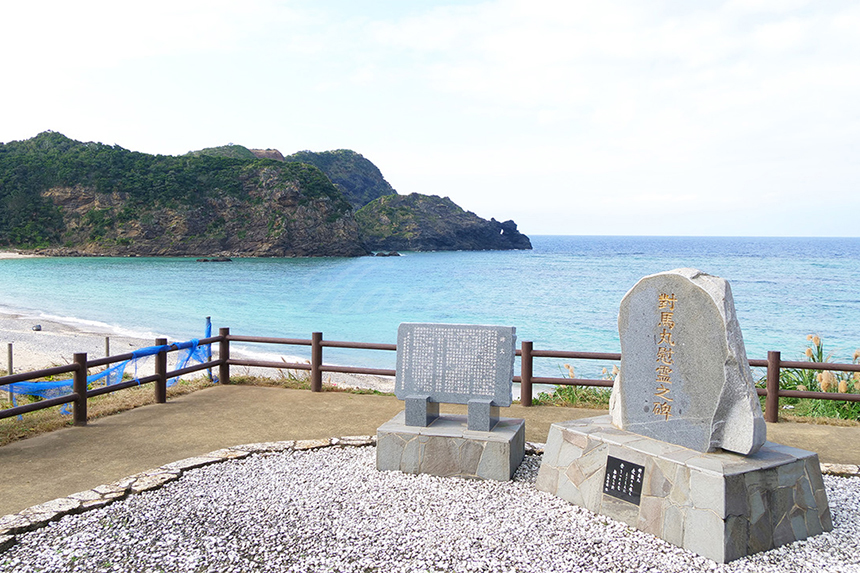
Cenotaph to evacuation ship Tsushima Maru (Uken Village, Amami Oshima)
Photo・Text/ HORIZON Editorial
